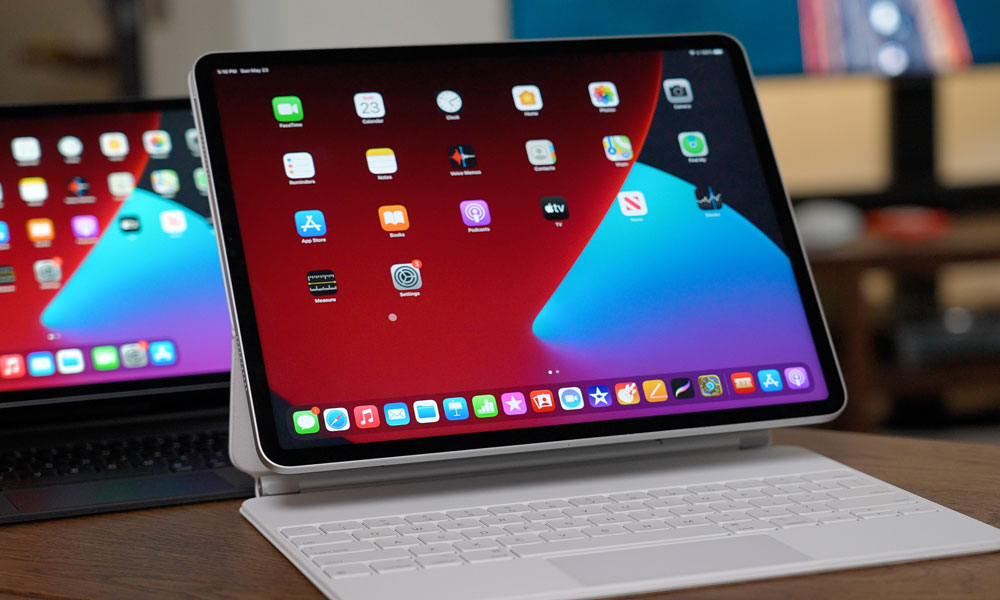The 11-inch iPad Pro Could Skip Mini-LED and Go Straight to OLED
 Credit: Daniel Romero / Unsplash
Credit: Daniel Romero / UnsplashToggle Dark Mode
Rumours have been swirling for years that Apple would eventually adopt the same kind of OLED screen technology in its iPads that it first brought to the iPhone X back in 2017, and while the company’s recent move into mini-LED display technology has cast some doubt on that, a new set of reports suggest that it may still be in the works.
In fact, reports last fall suggested that Mini-LED could just be a stepping stone on the way to OLED, especially since Apple chose to limit it to the 12.9-inch iPad Pro, leaving the smaller 11-inch model with the same Liquid Retina LCD technology that it’s used for the past few years.
In a recent interview with Brian Tong, Apple did offer up a somewhat feeble “marketing-speak” reason for why the smaller iPad Pro didn’t gain the Mini-LED display. Scott Broderick of worldwide iPad product marketing suggested it was simply because 11-inch iPad Pro users are more interested in portability than having a “large canvas to do their most creative work.”
Of course, much like Apple’s reasoning for omitting Find My Remote on the new Apple TV 4K, we’re fairly confident this is a marketing spin that doesn’t represent the real story. For example, it’s clear that Apple has been encountering supply constraints when it comes to things like display components.
However, it also wasn’t a big surprise that the Mini-LED display was coming only to the 12.9-inch iPad Pro — reputable analyst Ming-Chi Kuo said as much last fall. Since the global chip shortage only became apparent earlier this year, either Apple had more foresight into the potential problems (which is entirely possible), or there are other reasons at play.
For example, it’s probably no coincidence that all the Mini-LED displays developed thus far have been on the larger end of the scale. Apple’s recent 12.9-inch iPad Pro is leading the way, but it’s very likely that the next place we’ll see the new Liquid Retina XDR display is on the new 14-inch and 16-inch MacBooks.
Meanwhile, South Korea’s ETNews (Google Translate), suggests that the market for small and medium-sized OLED displays is about to enter its second growth phase. According to an unnamed source in the display industry, Apple has already signed agreements for production and delivery of new OLED displays from its usual partners, Samsung Display and LG Display.
The sense is that OLED may simply be a more suitable display technology than Mini-LED for smaller screens, at least in the current state of Mini-LED. After all, the current 12.9-inch iPad Pro packs in 10,000 LEDs compared to the mere 72 found on the previous iPad Pro. Trying to miniaturize that even further down to an 11-inch screen might present additional challenges, whereas OLED is an entirely different technology that’s already viable on devices as small as the Apple Watch.
Mini-LED and OLED also both produce similar results, with equally impressive contrast ratios, colour gamuts, screen size, and brightness levels, although Mini-LED is less subject to burn-in problems, which is why Apple may prefer it on productivity devices like the Mac and iPad Pro.
That doesn’t mean that Apple isn’t working on getting Mini-LED into the smaller iPad Pro — merely that it hasn’t been able to accomplish that yet, whether due to supply or technology problems. However, Kuo has also gone on the record already as saying that Apple is planning a 2022 iPad Air that will feature an OLED display, which makes a bit more sense for Apple’s mid-range models. Our guess is that the entry-level iPad will remain with a standard LCD for the foreseeable future, however, leaving the 11-inch iPad Pro as the only wildcard at this point.
[The information provided in this article has NOT been confirmed by Apple and may be speculation. Provided details may not be factual. Take all rumors, tech or otherwise, with a grain of salt.]






